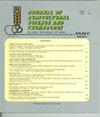An Analysis of Transformation Institutions in the Knowledge and Innovation System of the Handmade Carpet Industry
IF 1.3
4区 农林科学
Q2 AGRICULTURE, MULTIDISCIPLINARY
引用次数: 0
Abstract
The rich diversity of Persian carpets is a symbol of different cultures and traditions in this country. To ensure sustainability of the Handmade Carpet Industry Knowledge and Innovation System (HCIKIS), attention should be paid to the transformative approach that pursues holistic transformation in the production and consumption systems. The present study aimed to identify Formal Transformation Institutions (FTIs), classify them into main categories, and analyze them based on the production step, approval date, institution type, and geographical area of approval. Based on the results, there were 316 Formal Institutions (FIs) in the Handmade Carpet Industry (HCI). By open coding, 372 concepts were extracted from 509 concepts derived from different FTIs. Based on the axial coding, the FIs were divided into six initial categories of “carpet authority”, “carpet sales and maintenance inside Iran”, “handmade carpet exports and imports”, “carpet production infrastructure”, “handmade carpet production”, and “sanitary-therapeutic category”. At the next step, the matrix of the main categories based on different production steps was drawn. Among the main categories, the highest frequency was related to the category of “carpet production infrastructure” and the subcategory of “financial supply of carpet”. Although there are many FIs that support production, carpet weavers, as the main people involved in production, have received minimum supports during their working years due to unawareness of supports and loan conditions.手工地毯行业知识创新体系中的转型制度分析
波斯地毯的丰富多样性是这个国家不同文化和传统的象征。为了确保手工地毯工业知识和创新系统(HCIKIS)的可持续性,应注意追求生产和消费系统整体转型的变革方法。本研究旨在识别正式转型机构,将其划分为主要类别,并根据批准的生产步骤、批准日期、机构类型和批准的地理区域对其进行分析。根据研究结果,手工地毯行业共有316家正规机构(fi)。通过开放编码,从不同fti的509个概念中提取出372个概念。根据轴向编码,fi被分为六个初始类别:“地毯权威”、“伊朗境内地毯销售和维修”、“手工地毯进出口”、“地毯生产基础设施”、“手工地毯生产”和“卫生-治疗类”。其次,绘制了基于不同生产步骤的主要类别矩阵。在主要类别中,频率最高的是“地毯生产基础设施”类别和“地毯金融供应”子类别。虽然有许多金融机构支持生产,但地毯织工作为生产的主要参与者,由于不了解支持和贷款条件,他们在工作期间得到的支持很少。
本文章由计算机程序翻译,如有差异,请以英文原文为准。
求助全文
约1分钟内获得全文
求助全文
来源期刊

Journal of Agricultural Science and Technology
AGRICULTURE, MULTIDISCIPLINARY-
CiteScore
1.90
自引率
8.30%
发文量
0
审稿时长
4.5 months
期刊介绍:
Journal of Agricultural Science and Technology is one of the TMU Press journals that is published by the responsibility of its Editor-in-Chief and Editorial Board in the determined scopes.
Journal of Agricultural Science and Technology (JAST) is an international research journal published bimonthly for the purpose of advancing the scientific studies. The subjects covered by JAST include all aspects of agriculture and natural resources (see Areas Covered). The journal will consider submissions from all over the world, on research works not being published or submitted for publication towards publication as full paper, review article and research note. The Papers are published in English with an extra abstract in Persian.
 求助内容:
求助内容: 应助结果提醒方式:
应助结果提醒方式:


